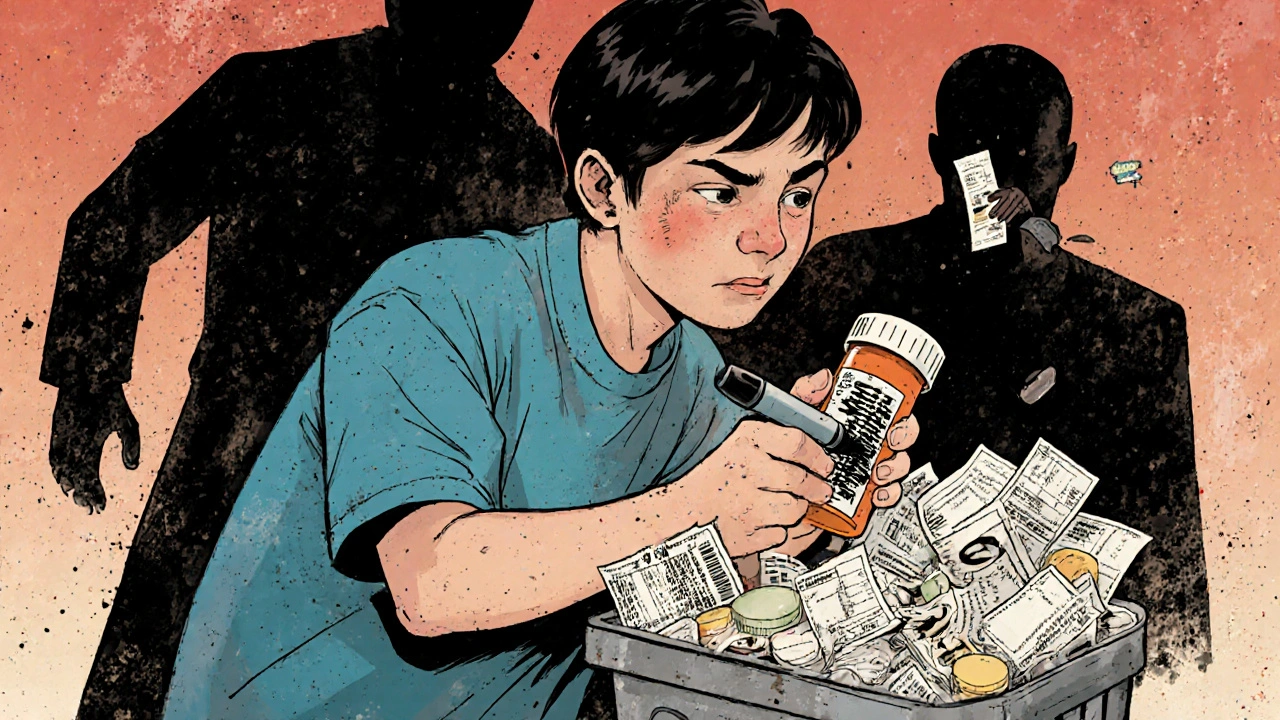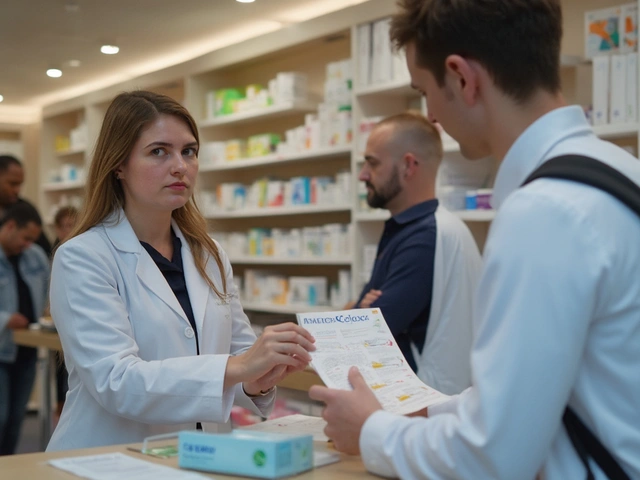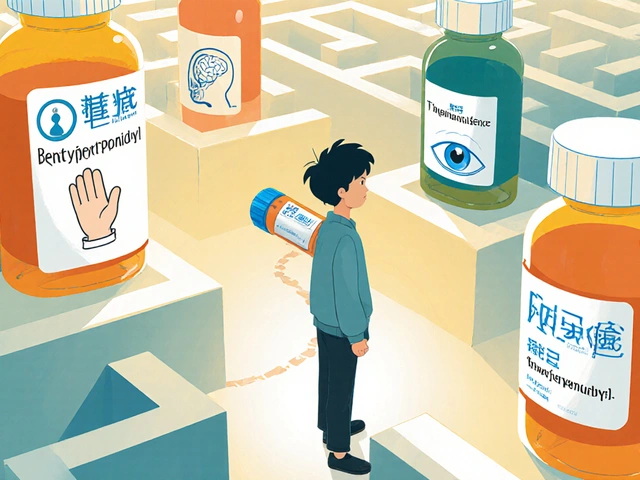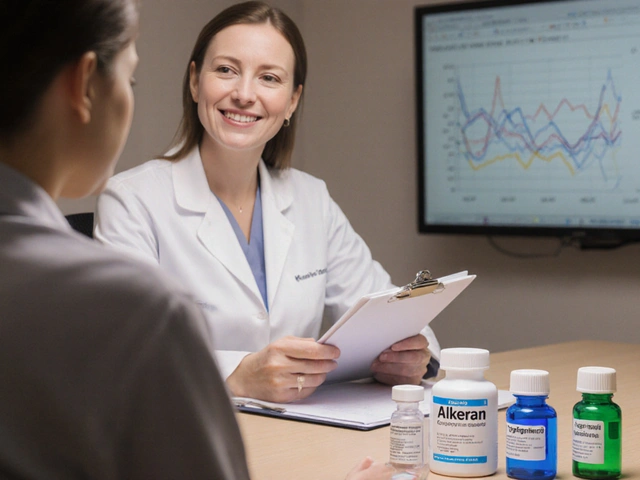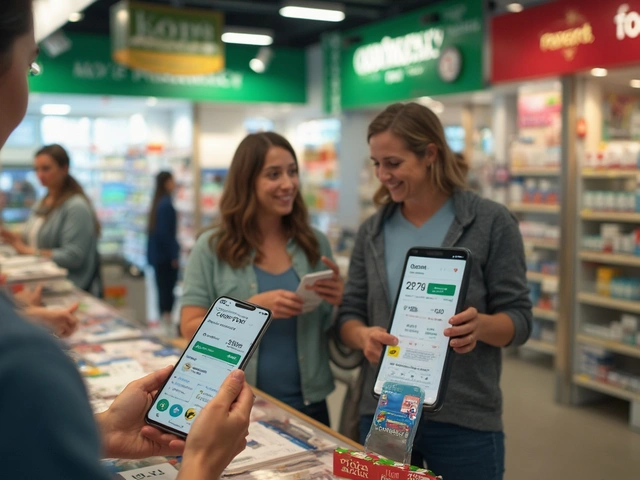Throwing away old pills might seem like a simple chore-pop the bottle in the trash and move on. But if you haven’t scratched off your name, Rx number, or diagnosis on the label, you’re leaving behind more than empty plastic. You’re leaving behind your medical history, your identity, and an open door for identity thieves.
Every year, millions of prescription bottles end up in landfills with personal information still clearly visible. A 2021 study found that 42% of pill bottles tossed in residential trash still had readable names, addresses, and drug details. That’s not just messy-it’s dangerous. Someone could use that info to steal your identity, forge prescriptions, or even get access to your insurance account. And it’s not just about theft. In one documented case, a woman discovered $1,200 in fraudulent insurance charges after someone found her oxycodone bottle in the trash and used her details to get more pills.
Why Your Prescription Label Is a Goldmine for Thieves
Your prescription bottle isn’t just a container-it’s a mini medical record. It contains your full name, address, the name of your doctor, the pharmacy’s contact info, the exact medication you’re taking, the dosage, and often your insurance ID number. That’s more than enough for someone to impersonate you, file false claims, or even apply for credit in your name.
The U.S. Department of Health and Human Services classifies this data as Protected Health Information (PHI) under HIPAA. That means healthcare providers are legally required to protect it-even when you’re the one throwing it away. But the law doesn’t stop thieves. It only reminds you: you’re responsible for making sure your info doesn’t end up in the wrong hands.
And it’s not just criminals. Family members, caregivers, or even curious neighbors could stumble across your bottle and learn things you never intended to share-like mental health meds, HIV treatment, or fertility drugs. Privacy isn’t just about security. It’s about dignity.
The Best Way to Dispose of Medications: Take-Back Programs
If you want the highest level of privacy and safety, use a drug take-back program. These are run by law enforcement, pharmacies, or local health departments. The DEA’s National Prescription Drug Take Back Day collects over 800,000 pounds of unused meds twice a year. But you don’t have to wait for an event-many pharmacies, including Walgreens and CVS, now offer year-round drop-off bins.
Here’s why this is the gold standard:
- No personal info is ever exposed-bottles go straight into secure collection bins.
- Medications are incinerated or chemically neutralized under federal oversight.
- It’s free. No envelopes to buy, no postage to pay.
- Over 89% of people who use these programs say they feel “very confident” their privacy was protected.
In Melbourne, you can find drop-off locations at most major pharmacies, police stations, and some hospitals. Just check the DEA’s website or call your local pharmacy. No need to remove the label-just bring the whole bottle. They handle everything.
Mail-Back Kits: A Private, Convenient Alternative
Not everyone lives near a take-back bin. If you’re homebound, elderly, or live in a rural area, mail-back envelopes are a solid option. Companies like Walgreens and DisposeRx sell pre-paid envelopes for $3-$7. You put your meds inside, seal it, and drop it in the mailbox.
Here’s how it works:
- You don’t need to remove labels-the envelope is designed to be tamper-proof.
- The package goes directly to a licensed disposal facility.
- It’s tracked like a package, so you know it was received.
- Some kits even include a deactivation pouch to neutralize meds before sealing.
It’s not free, but it’s far safer than tossing meds in the trash. And if you’re on a fixed income, some nonprofit programs offer free mail-back kits-ask your pharmacist.
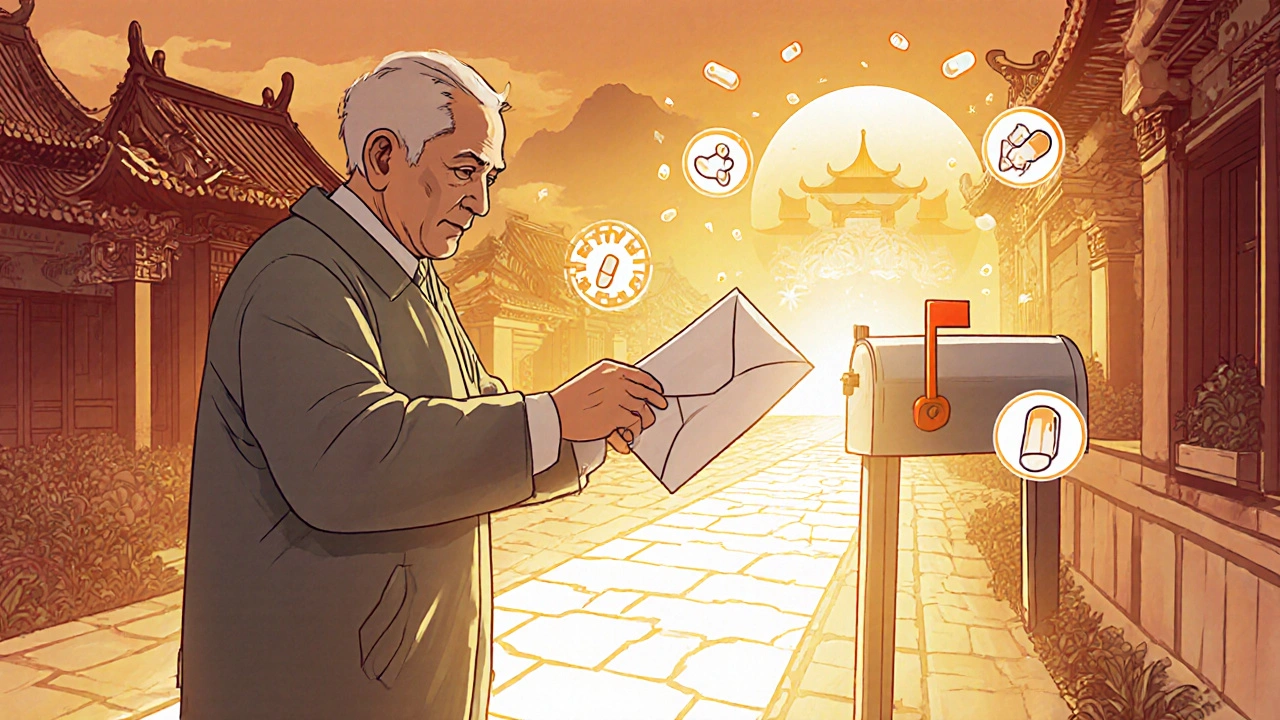
At-Home Disposal: Do It Right or Don’t Do It at All
If you have no other option, the FDA says you can dispose of most meds in the trash-but only if you follow these five steps exactly:
- Take pills out of the original bottle.
- Mix them with something unappetizing-used coffee grounds, cat litter, or dirt.
- Put the mixture in a sealed container-a jar, a ziplock bag, or an empty yogurt tub.
- SCRATCH OUT or COVER EVERY PIECE OF PERSONAL INFORMATION on the empty bottle with a permanent marker or duct tape.
- Throw both the mixture and the blank bottle in the trash.
Why this matters: A 2022 Mayo Clinic study found that 68% of people who tried this method skipped the privacy step. They just threw the bottle away. That’s like leaving your passport in the recycling bin.
Pro tip: Use a Sharpie Industrial marker. Regular markers fade. Industrial ones are designed to resist water, sunlight, and scraping. One pack costs under $5 and lasts for years.
What NOT to Do
Some habits are dangerously common-and dead wrong.
- Don’t flush meds unless they’re on the FDA Flush List. Only 15 drugs (like fentanyl patches and certain opioids) are safe to flush. Flushing others harms waterways. Check the list online or ask your pharmacist.
- Don’t just peel off the label. Most plastic bottles have sticky residue. The info is still readable. Scratch it. Cover it. Destroy it.
- Don’t assume “empty” means safe. Even a few leftover pills can be dangerous. Always mix them with something gross.
- Don’t rely on memory. If you’re unsure whether a med is on the Flush List, use a free app like DisposeRx’s tool. It scans your bottle and tells you exactly what to do.

Special Cases: What About Liquid Meds, Inhalers, or Patches?
Not all meds are pills. Here’s how to handle the rest:
- Liquid medications: Pour them into a sealed container with coffee grounds or kitty litter. Don’t pour them down the sink.
- Transdermal patches (like fentanyl or nicotine): Fold them in half with the sticky sides together, then flush them if they’re on the FDA Flush List. If not, mix them with coffee grounds and throw them away.
- Inhalers: Do NOT puncture or burn them. Take them to a take-back site. Some inhalers contain propellant gases that can explode if crushed.
- Insulin pens: Remove the needle and dispose of it in a sharps container. The pen body can go in the trash after removing the label.
When in doubt, call your pharmacy. They’ve seen it all.
Why This Matters More Than You Think
Identity theft isn’t just about credit cards. Healthcare fraud costs the U.S. system over $250 billion a year. A single stolen prescription label can lead to false claims, fake prescriptions, and years of legal headaches.
The HHS Office for Civil Rights says improper disposal of PHI is one of the top 10 privacy violations in healthcare today. And it’s not just about fines for hospitals-it’s about real people. A 2023 IBM report found that healthcare data breaches cost $498 per record. That’s the price of one forgotten pill bottle.
Meanwhile, the global market for safe medication disposal is growing fast. By 2030, it’s expected to hit $3 billion. Why? Because people are waking up. More pharmacies now offer take-back bins. More states are funding disposal programs. And more families are talking about it.
It’s not just a chore. It’s a habit that protects your future.
What’s Next? The Future of Private Disposal
Change is coming. By 2027, 40% of major pharmacies plan to install smart disposal kiosks that automatically scan and destroy labels. Some new pill bottles are already being made with self-erasing labels that fade after 30 days.
But you don’t have to wait. Right now, you can make a difference:
- Use a take-back bin whenever possible.
- If you must trash meds, follow the 5-step rule-every time.
- Teach your parents, siblings, or friends how to do it right.
- Ask your pharmacy if they have free mail-back kits.
Privacy isn’t complicated. It just takes a few extra seconds. And those seconds? They’re worth more than you know.
Can I just throw my old pill bottles in the recycling?
No. Most recycling programs don’t accept pill bottles because of contamination risk. Even if they do, your personal info is still visible. Always remove or destroy labels first. Then throw the empty bottle in the trash-unless your local program specifically says it accepts cleaned bottles.
What if I can’t scratch off the label? The ink won’t come off.
Use a permanent marker like a Sharpie Industrial. Write over the label several times. If that doesn’t work, cover it with duct tape. You don’t need to remove the label-just make the info unreadable. Tape works better than trying to peel it off, which often leaves ghost images.
Do I need to remove the cap or the bottle’s barcode?
Barcodes and caps don’t contain personal info, so you don’t need to remove them. Focus only on the label with your name, address, Rx number, and drug details. Those are the only things that matter for privacy.
Are there free disposal options for seniors on a fixed income?
Yes. Many local Area Agencies on Aging, senior centers, and nonprofit pharmacies offer free mail-back kits or free take-back events. Call your local pharmacy or search “free medication disposal [your city]” online. Some organizations even deliver kits to homebound seniors.
I’m worried about my child finding my meds in the trash. What should I do?
Don’t leave pills in the trash at all. Use a take-back bin or a mail-back envelope. If you must use the trash, mix the meds with coffee grounds or kitty litter and put them in a sealed container. Keep the container in a locked bin or behind a cabinet door. Children and pets can get sick or die from even one pill.
What if I have a lot of meds to dispose of?
Take them to a take-back event or use multiple mail-back envelopes. Don’t hoard them-expired or unused meds are a risk. Many pharmacies will accept multiple bottles at once. You don’t need to wait for a big event. Just ask your pharmacist.

